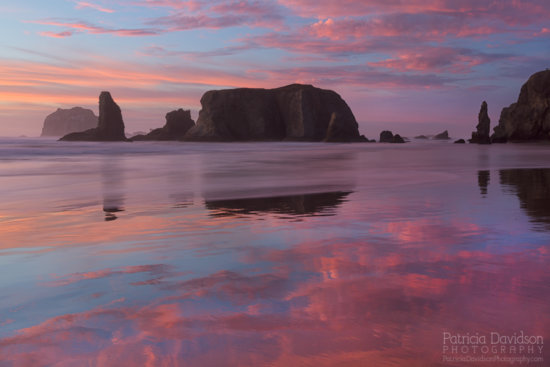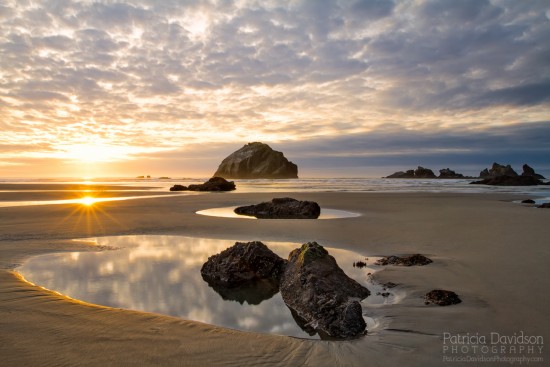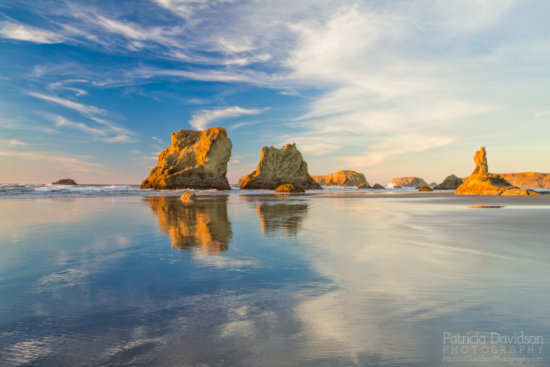Photographing Reflections on the Beach
Often during the late fall and winter months, the Oregon Coast has some fantastic brilliant sunrises and sunsets.
A couple of weeks ago, there were several days in a row where we experienced this annual phenomenon. I was able to get out and enjoy photographing in one of my favorite places, Bandon.
Since I had some new photos to share, I posted them on my Facebook page and other social media sites. There were some interesting comments I received about my beach reflections, so I thought it would be great to address them in this article. Two people made comments about the beach reflections; one was a photographer, which really surprised me. Both were amazed at the fact that I was able to get reflecting clouds on the sand.
Here are some suggestions:
- Get Down Low – Often you can’t see the reflections until you get down low to the ground. This means adjusting your tripod legs to a very low position and looking through the viewfinder or your LCD screen to see the reflections.
- Circular Polarizing Filter – The circular polarizing filter works great for cutting the glare on the wet sand and enhancing the reflecting clouds or other elements on the beach. Simply turning it will remove some of the shadows and make those reflections really pop.
- Composition – I like to use a wide-angle lens to really scout for a good composition. Focus on areas on the beach where the sand is wet or there are puddles around rocks. Take your time finding the right composition.
- Shoot in Raw – Shooting in raw can help you later in the post-processing of your image.
If you are someone that enjoys taking pictures but haven’t noticed the reflections on the beach, try these tips and see how fun it can be to photograph!
For more help with photography tips and techniques check out the following related information from Visual Wilderness:
- eBook – The Workflow Series – Coastlines
- Video – Put a Spin on your Colors







Mr or Mrs Patel: So yes, all four recommendations that Patricia Davidson offers, I understand and endorse! (
And she’s got some lovely examples here!) But here’s my question: What about the combination of the wide-angle perspective and the use of the circular polarizer? (I haven’t got my CP yet, but very soon from Breakthrough Photography. I imagine the purpose of the CP in these landscapes is to reduce glare on the surface of the water. But in the case of a wide-angle lens, that will “mess up” the sky — or some other part of the composition. Do you simply handle that in post-processing?
The answer is that depends on what you are trying to do….and the effect you are going for. Sometimes you can restore it in post processing…but other times it gets to complicated. Each situation is different and you need to fine tune your workflow to create the effect you want.